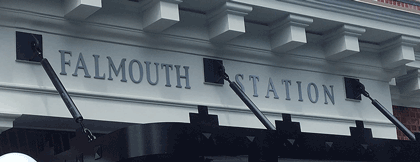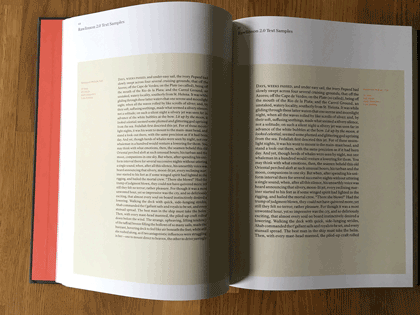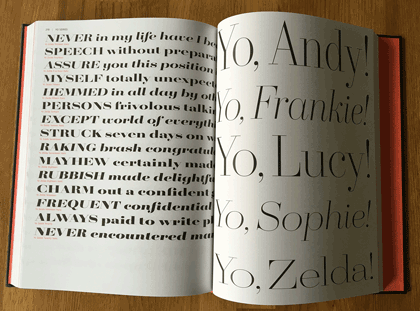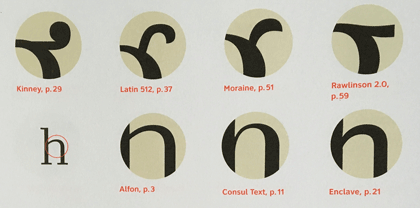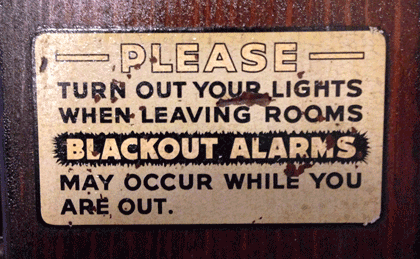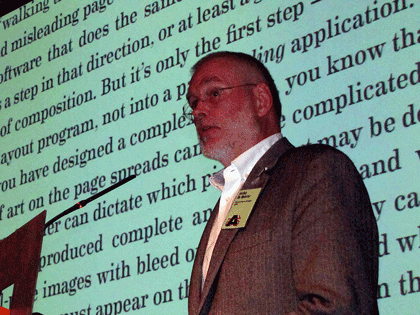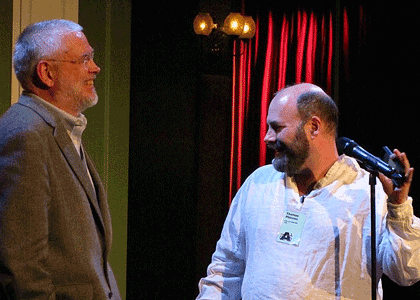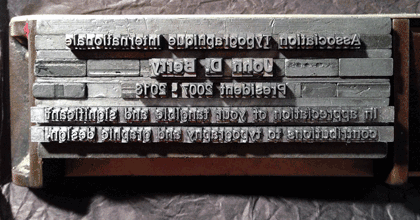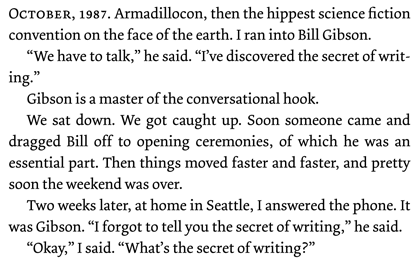In May, I had a chance to revisit my childhood home – on a business trip.
Although I was born and raised in Bronxville, New York, a close-in suburb of New York City, my family spent all of our summers in Edgartown, Mass., on the island of Martha’s Vineyard. My parents had met first there in the 1930s, and they are both buried in the Edgartown cemetery. They would have retired there, if my father hadn’t had a fatal heart attack at the age of 56.
So I always had two homes, like a migratory nomad herding the sheep from winter to summer pastures. Though without the sheep; maybe a cat or two, some years.
But I never expected to be returning to the island on typographic business. I’ve been working since last year as managing editor for Font Bureau, which has been technically based at its office in Boston but which is run by Sam and David Berlow, who both live on the Vineyard and have done so for many years. So that’s the location of Font Bureau’s annual “offsite,” and this year I was a participant.
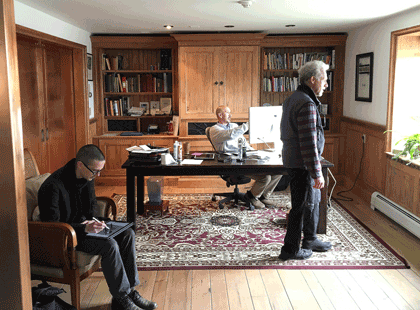
Around the two days of meeting and eating and talking type, I also found a little time to reacquaint myself with the island, and to meet up with one of my oldest friends. Sara Piazza and I have known each other since we were little children living two houses apart, best summertime friends from the age of five. (Admittedly we’ve let many years go by between contacts as adults. Facebook has been useful in renewing our connection. As is its wont.) Walking down Main Street to the Edgartown waterfront with Sara, who knows everyone on the street, and stopping to talk to many of them, felt to me like coming home, even though I was a stranger to them. (Well, no, I was a friend of Sara’s, so I wasn’t a stranger. And when I mentioned to Sam Berlow who it was I was going to see, he said, “Oh, Sara! Of course I know Sara.” It’s a small island.)
I had caught a ride from Boston down to Woods Hole with Roger Black and his husband Foster Barnes, and while we were waiting for our ferry we had lunch at a local seafood restaurant (what else?) and walked around the town a bit. I had never explored much more of Woods Hole than the area near the ferry dock, but we discovered a pleasant little New England seaside town with more, and bigger, scientific institutions than I had realized, as well as a peculiar semi-medieval bell tower overlooking the lagoon.
This Font Bureau offsite was retroactively declared the first offsite of Type Network, the new expanded type-distribution business that launched on June 1. I now have expanded responsibility, too, as managing editor for a complex of type foundries. We anticipate that the Type Network website will have a lot of new content in the coming months, so there’s work to be done. Check it out.
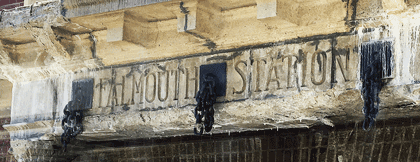
[Photos: (top, above) the new Font Bureau/Type Network office in Vineyard Haven (L–R: Cyrus Highsmith, Sam Berlow, Richard Lipton); (immediately above) lettering on the old Falmouth station (now a bus stop on the route from Boston); (left, top to bottom) Edgartown harbor; bell tower in Woods Hole; Roger Black and Foster Barnes in Woods Hole.]
[A year and a quarter later, the Falmouth bus station’s lettering had been spiffed up and updated.]
